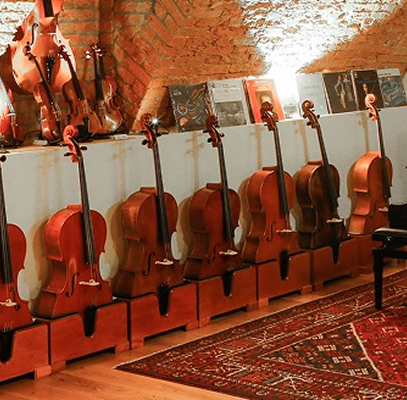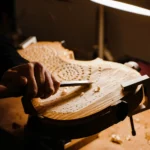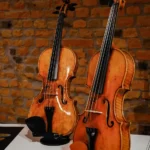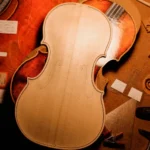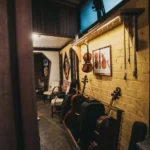10 Best Violinists of The Past
Back to BlogThe best violinists of the past have been influential and inspirational to countless aspiring musicians. They become legends among string players with high skill levels, incredible passion, and talent. As one of the earliest musical instruments in history, the violin symbolizes perfection. It is a unique piece of art that thousands have attempted to pass down throughout the centuries. And definitely, not the easiest instrument to play.
When you contemplate the lives and works of artists, it’s like going into another world and forgetting all about the rest, it’s a moment to connect with the music and the musician’s art. And today, we brought a list of the best violinists that amazed the world with their talents. Each of these violinists in history had created their own style, experimented with their own way of playing music, and developed their singularities.
Now let’s meet these legends: our selection of the best violinists of the past
Niccolò Paganini
The Italian violinist and composer inspired the Romantic mystique of the virtuoso and revolutionized the violin technique.
Niccolò Paganini was born in Genoa, Italy, in 1782. At age 7, he began studying violin. His abilities quickly surpassed his tutors’ abilities, and it is said that he learned the mandolin from his father.
Between 1801 and 1807, Paganini released 24 Capricci for unaccompanied violin, displaying the novel features of his technique, as well as two sets of six sonatas for violin and guitar.
According to The Strad article, it was around the mid-1830s that Paganini’s health and ability began to fail and then later led to his death in May 1840 from internal hemorrhaging.
Antonio Vivaldi
Violinist and composer Antonio Vivaldi energized late Baroque instrumental music by leaving his musical imprint on the form of the Baroque concerto. He became such a talented violinist that he was appointed master of violin at the Ospedale Della Pietà in 1703. Vivaldi composed his first set of sacred choral works in 1713, when he was asked to take over as choirmaster at the Pietà upon the sudden death of its previous conductor. Vivaldi’s concerti and their instrumental color and simple dramatic effects rapidly entered the general language of music.
Rodolphe Kreutzer
Born in Versailles, France, Rodolphe founded the French school of violin playing and was a leading improviser and conductor. Being a student of the influential composer and conductor Anton Stamitz, he was later appointed professor of the violin at the Paris Conservatory. In addition to writing 40 operas, including Lodoïska (1791), a popular one, he wrote ballets and 19 violin concerti.
Joseph Joachim
Violinist Joseph Joachim was born in 1831 and was once part of the Kingdom of Hungary. After moving to Budapest with his family, he began studying violin at age five with Stanislaw Serwaczynski, a man many considered the best violinist in the area. He wrote several concertos for several composers, including Beethoven, Brahms, and Mozart. Some of his original works include the overtures to Shakespeare’s Hamlet (1853) and Henry IV (1854), and his Violin Concerto No. 2 in D minor in the Hungarian Manner.
Eugène Ysaÿe
The Belgian violinist, conductor, and composer Eugène Ysaÿe was the foremost interpreter of the string works of French and Belgian composers of his time. During the years 1886-to 1897, he was a professor of violin at the Brussels Conservatory. In 1894, he began a series of orchestral concerts in Brussels that introduced much new music.
It was Ysaÿe’s playing, which was characterized by virtuosity, expressiveness, and intensive use of vibrato that inspired works by César Franck, Camille Saint-Saëns, Vincent d’Indy, and Gabriel Fauré.
Described by Carl Flesch as “the most outstanding and individual violinist I have ever heard in my life.” (pointed out by The Violin Channel)
Nathan Mironovich Milstein
He had a reputation as one of the leading violinists in the 20th century. He was significantly acclaimed for his interpretations of J.S. Bach’s unaccompanied violin sonatas and works from the Romantic repertoire. Milstein gave concerts throughout the Soviet Union, frequently performing in joint recitals with the pianist Vladimir Horowitz. In 1925 he moved to Paris, where he toured Europe annually from 1927 until World War II, resuming his touring in 1947.
Later in life, he moved to the United States, becoming a citizen and making his U.S. debut in 1929 as a soloist with the Philadelphia Orchestra. He toured extensively in the United States and Canada, recording prolifically and earning rave reviews.
Jascha Heifetz
A violinist born in 1901 in Russia made his United States debut at Carnegie Hall in 1917 and was an instant sensation. He recorded several solos, chamber, and concerto recordings with the Boston Symphony Orchestra and the Chicago Symphony Orchestra.
The Classical Music magazine informs us that the moment Jascha became famous was still in his teens, when he appeared with the Berlin Philharmonic, playing Tchaikovsky under the direction of Arthur Nikisch. The normally restrained Nikisch led an uproar of applause—that onlookers said he abetted from the podium.
Fritz Kreisler
Kreisler made his American debut at Steinway Hall in November 1888. Although the Vienna Philharmonic initially turned him down, he performed with the Berlin Philharmonic in a concert that gave him greater acclaim. In addition to a violin concerto, he wrote several solos and encores, including Liebesfreud and Liebesleid. He also wrote cadenzas for other composers’ violin concertos, including Beethoven’s, Brahms’s, Mozart’s, Viotti’s, and Paganini’s.
Pablo de Sarasate
In 1860 Pablo de Sarasate made his debut as a violinist. He had been studying music since childhood and was well-liked by the public. He toured Europe, North America, and South America during the rest of his life. Late 19th century composers deemed him a favorite, and his influence was so great that even music critic and playwright George Bernard Shaw dedicated a piece to him.
According to All Music, Sarasate’s 57 compositions were the majority of which were forgotten by the time of his death; they were fashioned in a style that reached little beyond its own time. The Zigeunerweisen, Op. 20, remains an indispensable item in the violinist’s repertory, however, and his splashy Spanish Dances, Opp. 21-23 and 26 still furnish enjoyable diversions in the course of many a violin recital.
Ginette Neveu
Born in Paris in 1919, she started her musical education early, taking lessons with her mother, a violinist. Before she was a teenager, she had performed both Bruch’s and Mendelssohn’s concerti. Later, at the Paris Conservatoire, she studied violin under Jules Boucherit and composition under Nadia Boulanger.
The death of French violinist Ginette Neveu was a tragedy. She was just 30, and her career was just taking off when her Air France flight crashed into a mountain in the Azores archipelago.
As a teenager, before World War I, Neveu made several recordings, including a passionate and heartfelt rendition of the Strauss Sonata with pianist Gustave Beck.

